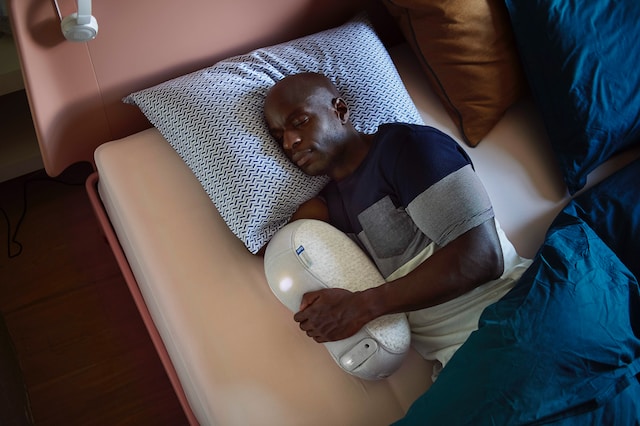
Sleep Apnea Devices: Your Ultimate Guide to a Restful Night
Sleep apnea is a common sleep disorder that affects millions of people worldwide. If you or someone you know is struggling with sleep apnea, you may have many questions about the condition and the various treatment options available. In this comprehensive guide, we will address some of the most common questions people have about sleep apnea device. We will also provide specific answers and solutions to help you make an informed decision.
What is Sleep Apnea?
Sleep apnea is a potentially serious sleep disorder in which a person’s breathing is repeatedly interrupted during sleep. The most common type of sleep apnea is obstructive sleep apnea (OSA). This occurs when the muscles in the throat relax and block the airway. Central sleep apnea (CSA) is less common. This is caused by the brain’s failure to send the proper signals to the muscles that control breathing.
According to the American Sleep Apnea Association, it is estimated that 22 million Americans suffer from sleep apnea, with 80% of moderate to severe cases remaining undiagnosed.
Why is Sleep Apnea Treatment Important?
Untreated sleep apnea can lead to a variety of health problems, including:
– High blood pressure
– Heart disease
– Stroke
– Diabetes
– Depression
– Worsening of ADHD
Additionally, sleep apnea can cause daytime sleepiness, which can lead to poor performance at work or school, as well as an increased risk of accidents.
What are the Different Types of Sleep Apnea Devices?
There are several types of sleep apnea devices available to help manage the condition. The most common devices include:
Continuous Positive Airway Pressure (CPAP) Machines
A CPAP machine is the most common and effective treatment for sleep apnea. It works by delivering a continuous stream of air through a mask that covers the nose and/or mouth, keeping the airway open and preventing apneas from occurring.
Bi-Level Positive Airway Pressure (BiPAP) Machines
A BiPAP machine is similar to a CPAP machine but provides two different levels of air pressure: one for inhalation and a lower pressure for exhalation. This can make it more comfortable for some users, particularly those with difficulty exhaling against the continuous pressure of a CPAP machine.
Adaptive Servo-Ventilation (ASV) Devices
ASV devices are designed for the treatment of central sleep apnea and complex sleep apnea (a combination of obstructive and central sleep apnea). These devices monitor the user’s breathing and adjust the air pressure accordingly to prevent apneas from occurring.
Oral Appliances
Oral appliances are custom-made devices that are worn in the mouth during sleep to help keep the airway open. They work by repositioning the lower jaw and tongue, preventing the throat muscles from collapsing and blocking the airway. Oral appliances are typically used for mild to moderate obstructive sleep apnea.
Positional Therapy Devices
Positional therapy involves wearing a device that encourages the user to sleep in a position that reduces the likelihood of apneas occurring, such as on their side. This can be particularly helpful for individuals whose sleep apnea is primarily caused by sleeping on their back.
How Do I Choose the Right Sleep Apnea Device?
Choosing the right sleep apnea device depends on several factors, including the severity of your condition, your personal comfort, and any additional health concerns you may have. It is essential to consult with a healthcare professional, such as a sleep specialist or a dentist with expertise in sleep apnea, to determine the most appropriate treatment option for your specific needs.
How Can I Ensure the Effectiveness of My Sleep Apnea Device?
To ensure the effectiveness of your sleep apnea device, it is crucial to:
1. Follow your healthcare professional’s instructions: Proper use and maintenance of your device are essential for optimal results. Make sure to follow your healthcare provider’s recommendations for using and cleaning your device.
2. Monitor your progress: Regular follow-up appointments with your healthcare professional can help track your progress and make any necessary adjustments to your treatment plan.
3. Address any issues promptly: If you experience any problems or discomfort with your device, contact your healthcare professional immediately to discuss potential solutions.
4. Practice good sleep hygiene: In addition to using your sleep apnea device, it is essential to practice good sleep hygiene, such as maintaining a consistent sleep schedule, creating a relaxing bedtime environment, and avoiding stimulants before bedtime.
Summary: Ultimate Guide to Sleep Apnea Devices: Everything You Need to Know
Sleep apnea is a common and potentially serious sleep disorder that can lead to various health problems if left untreated. Fortunately, there are several sleep apnea devices available to help manage the condition, including CPAP machines, BiPAP machines, ASV devices, oral appliances, and positional therapy devices.
Consulting with a healthcare professional is crucial in determining the most appropriate treatment option for your specific needs. By following your healthcare provider’s instructions, monitoring your progress, addressing any issues promptly, and practicing good sleep hygiene, you can improve your sleep quality and overall health.
Related Topic: The Ultimate Guide to Choosing the Best Sleep Apnea Pillow



